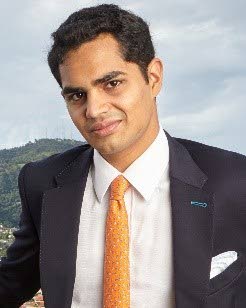A sporting chance

Kiran Mathur Mohammed
kmmpub@gmail.com
A small cork ball hurtling at speed can smash through a few sticks and in milliseconds become a focal point for swells of excitement, joy and sorrow. The West Indian cricket team thrashed England last week: their first proper victory after years of general dejection.
We can punch above our weight in sport. Per capita we ranked 28th in the Rio Olympics. But much of this is due to a few outlier athletes. Much of our potential still lies untapped.
This has implications beyond the field. The WHO says that 41.7 per cent of adults in TT do less than 150 minutes of moderate-intensity physical activity (or 75 minutes of vigorous activity) a week, compared to 23.3 per cent globally – 63.1 per cent are overweight and 32.3 per cent are obese. Women are only half as active as men.
RTI International has estimated the cost of diabetes and hypertension to TT at $6.8 billion annually. Physical activity is a major risk factor.
In 2013, Professor Ding Ding at the University of Sydney estimated that low physical activity cost our country US$33.6 million in direct health-care costs, productivity losses, and disability-adjusted life-years.
Even that number is conservative. For one thing, it doesn’t include forgone potential income from the sports industry. A more active population is more likely to produce more top athletes. And a country with more stand-out players is more likely to attract the events that draw some of the estimated US$800 billion global sports tourism haul (according to Orbis Research).
After all, Caribbean host countries were able to generate US$168 million in revenue from the 2014 CPL cricket tournament.
Becoming physically fit and fulfilling our sporting potential is crucial to our health and productivity. It boosts economic growth. So why do we find it so difficult to be active?
Many of us work multiple jobs to make ends meet. We come home exhausted. Finding time or energy for fitness might seem unaffordable. But it is not. Taking the time to be active saves healthcare costs later on. In the US, the Journal of the American Heart Association estimates the personal cost of inactivity in American at US$2,500 annually – not including lost productivity.
Employers who allow employees time to exercise will benefit. A University of Bristol study determined that exercise improves mood- which significantly improved self-reported work performance.
New apps make exercise more convenient. Fitnet Live Coach connects people with personal trainers for less expensive virtual sessions, whilst Gorilla Workout aims to "gamify" exercise monitoring.
Of course, most people don’t need to be told about running and simple bodyweight exercises. The main thing is motivation; chiefly our own. In my defence I did at least have the decency to feel ashamed when I cancelled my gym session to write this article.
A 2018 study in Translational Behavioural Medicine did a systematic review of behavioural interventions for healthy – but inactive – adults; distilling research from 47 papers.
The first thing that the studies agreed on was that a detailed exercise plan helps. Seek out and accept informed fitness advice.
Increase workout intensity gradually; not sharply. Social anxiety or a desire to prove ourselves can lead us to being overly ambitious. This can lead either to injury or to us missing out on the small feelings of success that gradual progression gives.
"Prompt" yourself: go to a supervised exercise class or get an exercise buddy- anything social. Monitor yourself with a heart rate monitor if you can. Finally, reward yourself by doing something fun when you meet your goals.
Our health system can apply these same interventions. State agencies can share simple workout plans, alongside community demonstrations. They can provide people with heart rate monitors or implement reward programmes (perhaps with free physical training classes).
Effective interventions take culture into account. For example, physical activity is seasonal – peaking before Carnival. Phillipe Jackson, manager at Gold’s gym for TT, trains staff to harness clients motivation beyond Carnival. Other methods could investigate what is preventing Caribbean women from being as physically active as men.
I spoke with the NCRHA and its CEO Davlin Thomas. They have screened 25,000 people through their Walk the Talk programme. Medical officers attend religious services; present to congregations, screen patients for lifestyle diseases and offer both prescriptions and advice on diet, exercise and stress. This leverages the trust people have in their religious leaders to prompt them to make healthier choices; and boost the economy to boot.
With that said, I hope this article prompts me to make my morning gym tomorrow…
Kiran Mathur Mohammed is a social entrepreneur, economist and businessman. He is a former banker, and a graduate of the University of Edinburgh.

Comments
"A sporting chance"